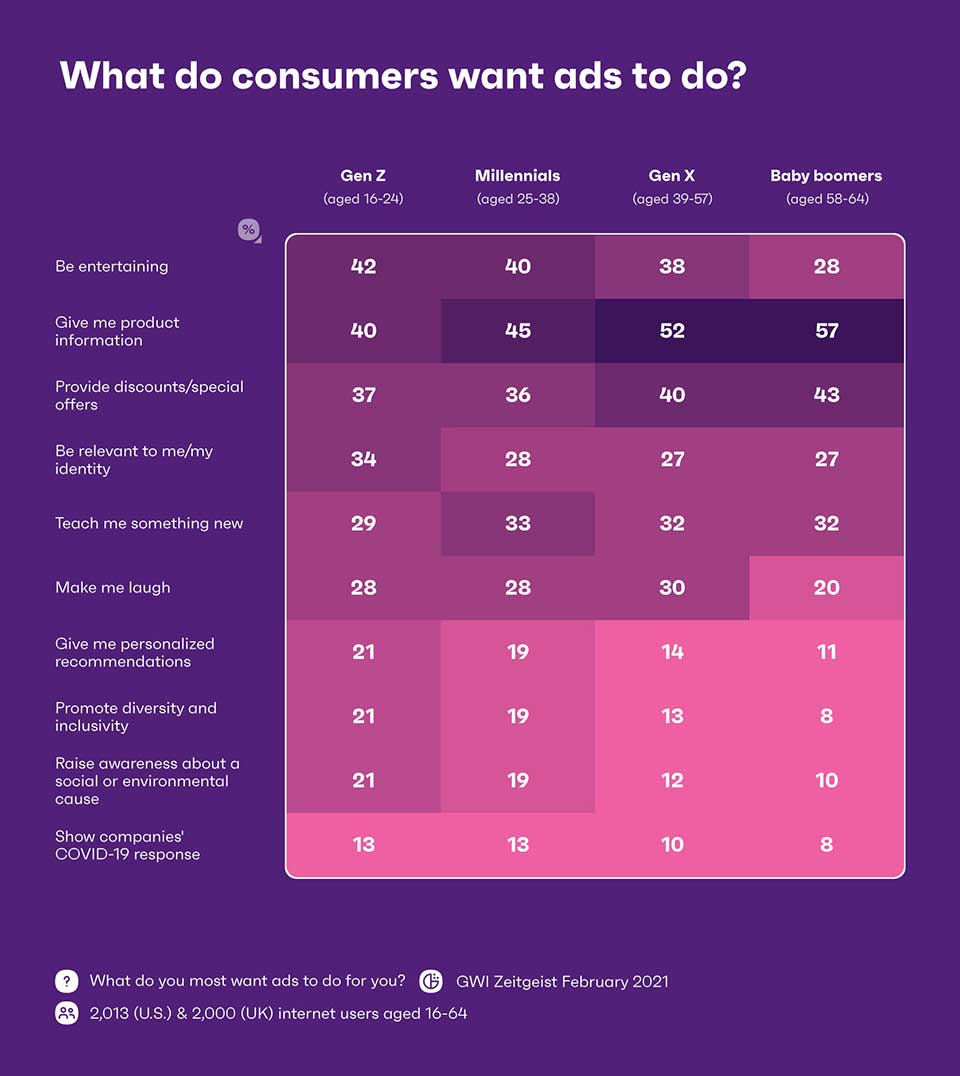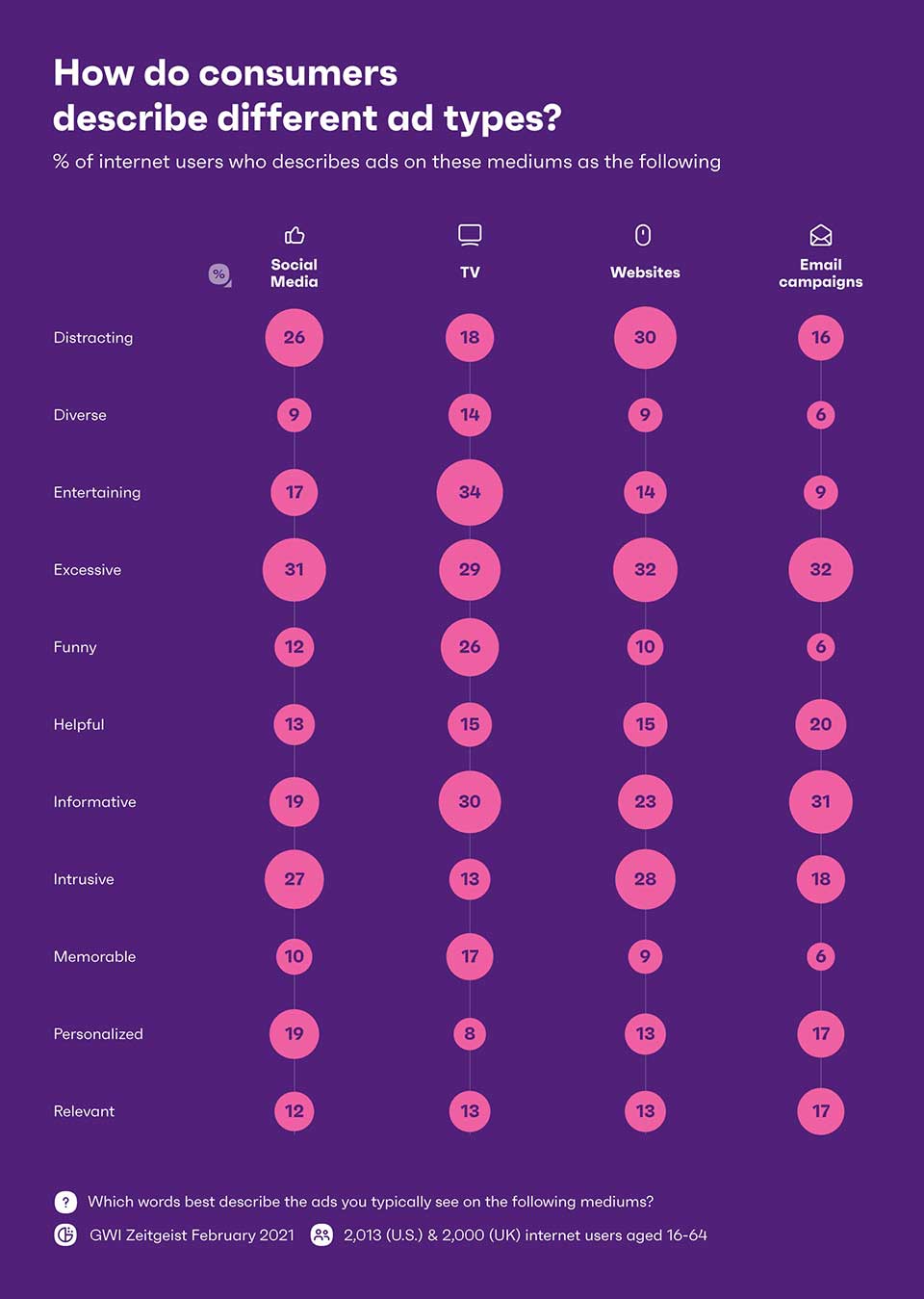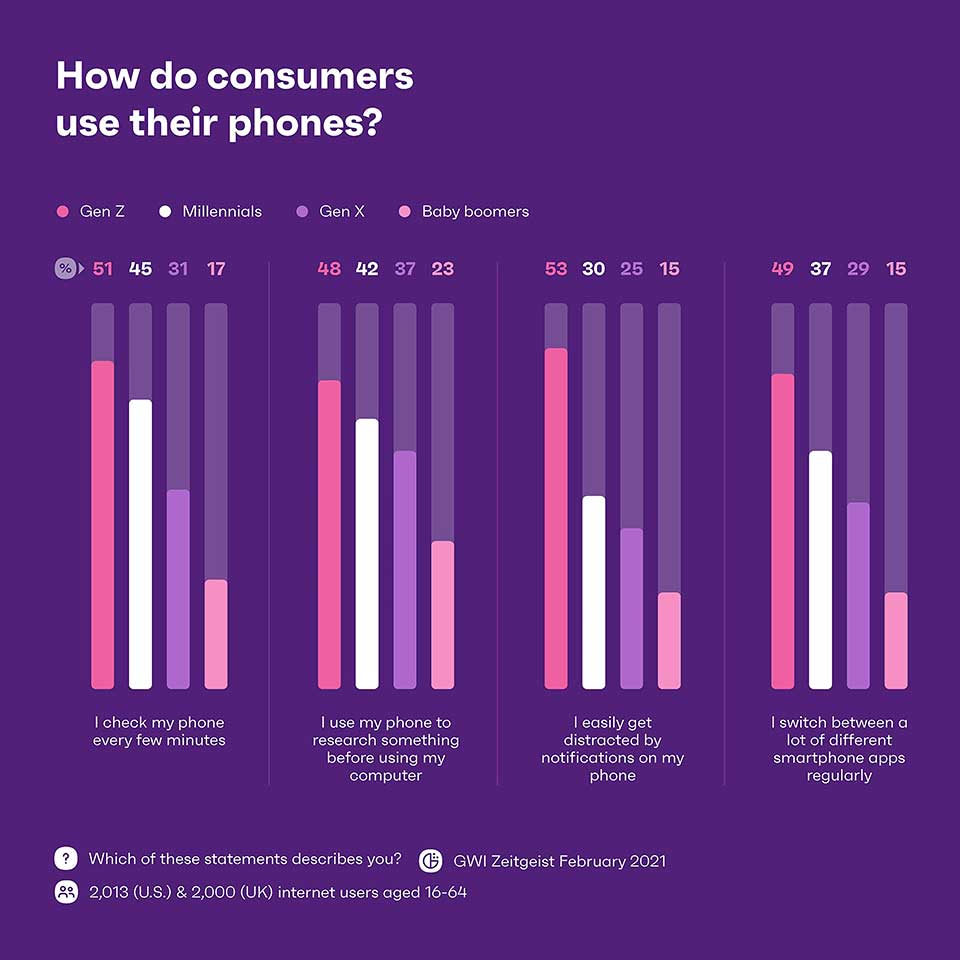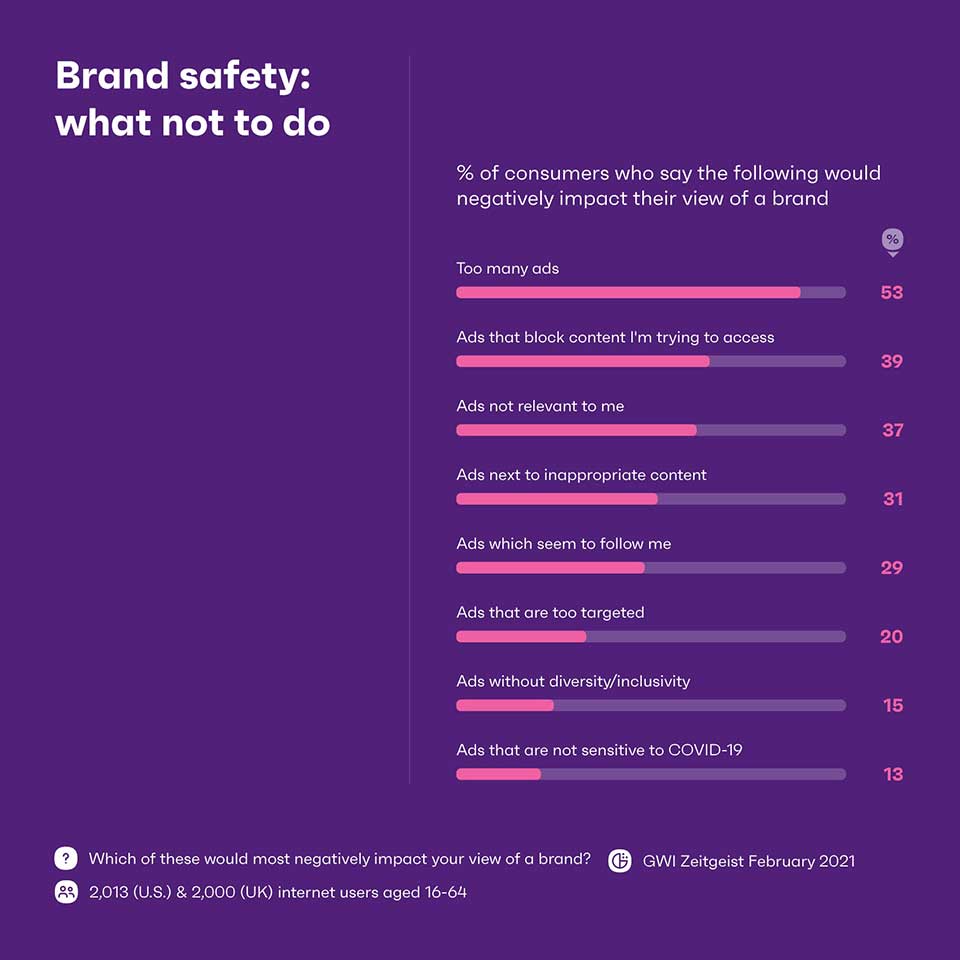By Isaac Hopkins, Trend Analyst, GWI
No one in advertising needs reminding of how tumultuous the past 12 months have been. A year when global ad spends fell by around 10% amid the economic fallout of COVID-19. To align with new habits under lockdown, budgets have been shifted into more mobile-friendly digital media. Traditional channels have taken a hit.
But consumers still value traditional ads, and brands would be unwise to assume they’ve become stale.
What’s more, while first- and third-party data offers brands unparalleled targeting opportunities, it struggles to answer all their questions. For example:
- What do different age groups want from ads?
- What are the most effective kinds of media?
- Why is online attention so expensive?
- How can brands be certain their ads are driving consumer behavior?
Gen Z are the most demanding
The key to any advertising campaign is zeroing in on your target audience. And, more often than not, this is drawn along generational lines.
What consumers look for in an ad is heavily dependent on their age.

All in all, younger consumers have a more diverse list of expectations when it comes to advertising. Most notably, they show signs of wanting to connect with an ad on an emotional level.
Their older counterparts, on the other hand, are drawn to the functional, more tangible, benefits of ads.
Gen X and baby boomers are considerably more likely to want ads to give them product information or provide discounts. In comparison, Gen Z is more likely to want ads to be entertaining (42%) than informative (40%).
And Gen Z’s demands don’t stop there. This generation is driving the call for ads to promote social and environmental causes, and brands can’t afford to be complacent. As McKinsey Associate Partner, Emma Spaganuolo explains:
“You can’t talk about sustainability if you’re not doing sustainable practices. In the past, you could hide by selecting and choosing what you wanted to show to the public – today everything is fair game.”
Over a third of Gen Z want ads to be relevant to their identity, the key to that is brands being authentic and staying true to their promises.
Traditional media remains relevant
Declining viewership means the death of TV is close – or at least, that’s what some commentators would have us believe. But even in this post-COVID digital age, broadcast TV remains more popular than its online alternative.
But it’s not just its popularity that makes TV so appealing to advertisers, it’s the way in which it provokes an emotional response from consumers.

Compared to online ad formats, TV ads are more likely to be described as “diverse”, “memorable”, “funny”, or “entertaining”, while they’re less likely to be associated with negative adjectives like “intrusive” or “excessive”.
Email marketing is another format that’s valued by many consumers.
Often described as “relevant”, “helpful”, and “informative”, while emails don’t provoke the emotional factor seen with TV, they’re ideal for the information-hungry older consumer.
On the other hand, social media is the most likely advertising medium to be associated as personalized – something we’ve noted Gen Z is looking for.
Across the board, consumer sentiment toward website ads is largely negative.
While shifts to mobile-first have been happening with greater speed over the last year, brands should not forgo the power of traditional advertising.
Younger people are easily distracted online
Consumer attention online is limited, something marketers are only too well aware of. And attention from young people is the hardest to capture.
Prone to distractions, they’re often most costly to reach.

The data confirms that younger consumers often check their phone every few minutes, or that mobile is their preferred device. But, we need to explore in more detail how exactly these devices are used, and how attention works.
While young consumers are present, they’re very likely to be easily distracted by notifications or to regularly switch between different ads.
Ultimately, they’ll rarely give an advertisement the prolonged attention it requires to drive their behavior.
So brands often pay for huge advertising campaigns, knowing that only a small proportion of their target audience will actually pay attention to the ad, let alone click on it.
Direct Line is an example of a brand that have experienced this recently. The insurer relaunched its Churchill brand with a social media plan to reach younger audiences.
After assessing factors such as viewability, view-through rates, and consumer attention, Direct Line Group achieved less than 0.1% of the desired incremental reach across Facebook, Spotify, and Twitter.
As Karl Ward, Direct Line’s Marketing Effectiveness Manager concludes, “[social media] plays its part, but it’s not a TV-like channel, and shouldn’t be used like TV. It’s more like OOH”.
Providing information is key to driving consumer behavior
Brands that know exactly what consumers are after are best set to get their attention and convert this into actionable behavior – whether that’s further research or making a purchase.
By profiling consumers who’ve done a specific ad-related action in the last week, we’re able to determine what they want ads to do for them, and see what brands need to do to drive this behavior.
Among consumers who’ve purchased something from an ad in the last week, 55% say they want ads to teach them something new and 46% want them to be entertaining.
By contrast, among consumers who watched an entire online video ad in the last week, these percentages switch positions.
In other words, online video is key for capturing consumer attention while informational content is more likely to drive sales.
But this isn’t a one-size-fits-all approach. Ultimately, it’s dependent on a number of factors including the type of product or service, brand identity, and target audience.
For example, a recent study found that it’s among low-quality and low-priced products specifically that emotional content increases brand awareness, while informational content leads to increased sales.
While brands must consider their specific industry, this analysis has opened up a way to design ads that promote specific and favorable consumer behaviors.
Ads need to be more relevant
For brands, getting advertising right is an ongoing battle for perfection, but they also need to ensure they manage against getting it wrong as well.

Ultimately, producing too many ads can be very damaging for a brand. Instead, they should focus on appealing to consumer expectations rather than bombarding them with unwanted clutter that’s unlikely to pique their interest.
And consumers are showing signs they’re willing to work with brands to make this happen.
Irrelevant ads paint a more negative picture of a brand than ads that seem to know us too well.
So while data concerns remain high, this suggests consumers are willing to accept that brands have access to their data so long as their ads – while still intrusive – are at least relevant.
Some commentators, such as the FT’s Elaine Moore, claiming that the potential relevance of targeted advertising has been exaggerated by the likes of Google and Facebook.
On the other hand, while accepting that brands struggle to explain the benefits to customers, L’Oréal’s CMO, Stéphane Bérubé, would disagree:
“From a marketing industry standpoint, we may have not done a very good job in the past of explaining why data can bring relevancy and content that is more meaningful. This is the biggest challenge and at the same time, if done well, could create huge, positive shifts that will respond to consumer expectations and needs.”
Yet, in the aftermath of COVID-induced digitization, while concerns are still high, consumers are showing signs of being won over.
On the other side, when it comes to brand safety, there are plenty of other considerations to make.
31% of consumers say ads next to inappropriate content would impact their view of a brand. This is twice as likely to negatively impact a brand than if it doesn’t promote diversity (15%).
2020 saw much soul-searching in the ad industry, initially about striking the right tone around COVID-19, and then being critical about issues of diversity and representation. And while these issues are important, advertisers should be aware that the context around an ad can be just as damaging as what’s in the creative.
Often the ad placement is just as, if not more important than, the content of the ad itself.
All in all, from brand safety to consumer attention, the effectiveness of online ads is continuously evolving with consumer expectations, especially in the wake of COVID-19 digitization.
Yet, as these ads move in one direction, marketers shouldn’t overlook the potential of tried-and-tested traditional advertising – most notably TV.
How consumers feel about ads is paramount, because it directly affects their behavior, and that’s what brands have set out to influence in the first place.








